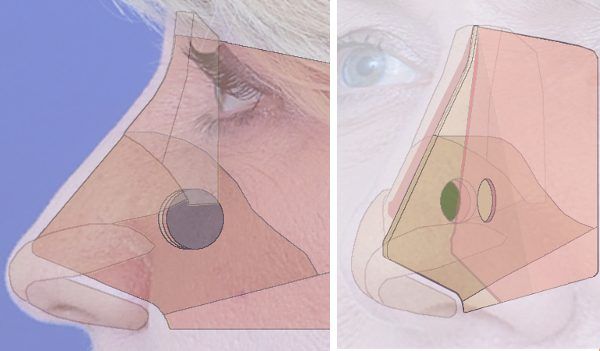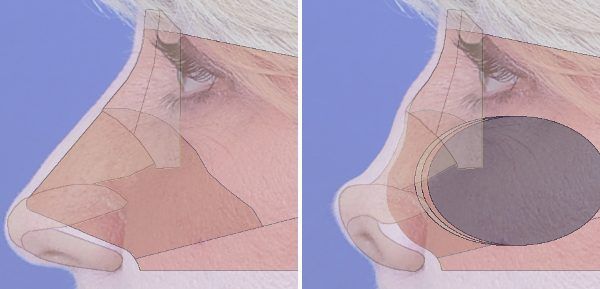Case Study: Saddle Nose Deformity After A Bad Staph Infection
The Problem
This 73-year-old woman had complications during a cardiac stent placement that required her to be hospitalized. She subsequently developed a Staph infection and sepsis that required intensive care treatment and intravenous antibiotics for many weeks. The event nearly killed her, and she is lucky to have recovered.
Unfortunately, she did suffer a rare, long-term complication. Through some unknown mechanism, part of the infection had localized to the bridge of her nose and eaten away at the normal cartilage. Due to loss of support, her nose eventually collapsed and become severely deviated, affecting both her appearance and breathing.
When I examined her, I could see why she could barely breathe out of the left side of her nose. The lower part of her bridge had saddled into her nose causing the tip to bend up and to the right. This had almost completely closed off the left side of her nasal passage.
The Solution
To restore her form and function, we needed to build her nose back up and straighten it. This would require using her own cartilage to create new “structure”. The cartilage that rhinoplasty surgeons typically harvest either come from:
- The nasal septum, which is the dividing partition between the left and right nasal passage
- The bowl of the ear, or...
- The rib
Because this patient had previous septoplasty 40 years before, her septal cartilage was not reliable. Ear cartilage would not be strong enough to support her degree of collapse. Rib cartilage was the only viable option, and the patient elected to use donor rib cartilage, which has been harvested from the deceased and treated to remove all cells and microbes.
During surgery, we first needed to rebuild a straight septum, the most crucial element for the trajectory of the nose. We accomplished this by extending the septum at the base of the nose with a septal extension graft (Fig 1, purple) and articulating it straight spreader grafts along the bridge of the nose (Fig 1, green).
The next step was to rebuild the height of the bridge and tip. We carved a larger piece of rib graft into the desired shape and secured this on top of the bridge, underneath the skin (Fig 2, translucent purple). Also, we secured the tip cartilages to the septal extension graft in a straighter and more projected position. This maintains balance between the newly projected bridge and tip.








